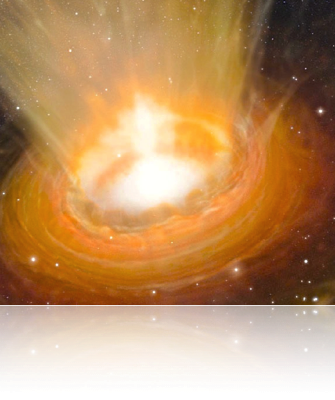The unification scheme after 30 years
Winchester/Southampton, UK
14-17 September 2015
Scientific programme has been published
The abstract booklet is available here.
Enquiries: torus2015@gmail.com
The torus paradigm has proved to be remarkably successful at unifying the observed zoo of active galaxy (AGN) classes, despite having many manifest holes. The field is still data-driven with novel observational results at multiple wavelengths emerging rapidly. We are only now beginning to map out the structure of dusty gas feeding and obscuring AGN, and to model its evolution in galaxy growth. But these have also brought out several apparently contradictory results which must hold the key to future progress.
As we celebrate 30 years of the paradigm, this is the perfect time to draw together our current knowledge and reassess the state of the field. This will be an international workshop at the University of Southampton, UK, with the objective of laying out the major challenges to the field and paving future research directions. Our hope is to facilitate plenty of informal discussions between multiwavelength observers and theorists, addressing some key issues:
* What is the main driver in the unification scheme? What are the roles of orientation, mass accretion rate and feedback?
* What is the nature and structure of gas and dust in the torus? Do we have a self-consistent picture across multiple wavelengths?
* How critical is the role of the torus as an interface between small nuclear scales and large galactic scales? Does galaxy evolution necessarily require tori?
* How close are we to self-consistently simulating nuclear activity including AGN feeding and nuclear star-formation?
Workshop Rationale



Illustration: M. Kornmesser / ESO
Workshop Format
The three themes of accretion, orientation, and evolution will be covered through invited and solicited contributions. Different to other conferences, we are building each session around some key papers that have shaped the field or those with great future potential to do so. We specifically pit competing ideas against each other to help painting a realistic picture of the state-of-the-art. Each session will end with discussion rounds delving into important future perspectives. We hope to spark plenty of focused discussion amongst the participants, and the workshop format will allow for this.
Confirmed invited participants
Robert (Ski) Antonucci ● Dave Alexander ● Daniel Asmus ● Karina Caputi
Santiago Garcia-Burillo ● Ric Davies ● Moshe Elitzur ● Antonis Georgakis ● Fiona Harrison
Andrew King ● Makoto Kishimoto ● Shintaro Koshida ● Stefan Kraus ● Ari Laor
Stephanie Lamassa ● Nancy Levenson ● Frederic Marin ● Hagai Netzer
Hirofumi Noda ● Cristina Ram os Almeida ● Claudio Ricci ● Yoshihiro Ueda
Beatriz Villarroel ● Martin Ward ● Belinda Wilkes
Scientific Organising Committee
Almudena Alonso Herrero ● Patricia Arévalo ● Poshak Gandhi (Co-chair)
Sebastian Hoenig (Co-chair) ● Masa Imanishi ● Rachel Mason ● Chris Packham
Cristina Ramos Almeida ● Marc Schartmann ● Marko Stalevski ● Meg Urry
Local Organising Committee
Diego Altamirano ● Chris Boon ● Peter Boorman ● Sam Connolly ● James Matthews
Poshak Gandhi (chair) ● Wynn Ho ● Sebastian Hoenig ● Sam Mangham ● Francesco Shankar
David Williams
Our @TORUS2015w feed
(run by Peter Boorman)
What others say about #TORUS2015